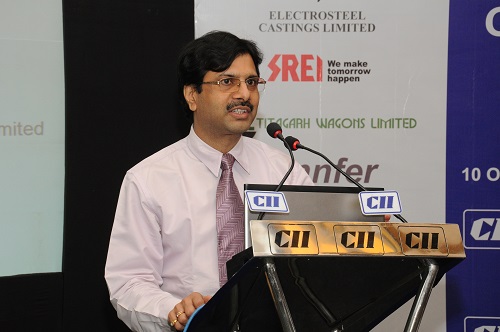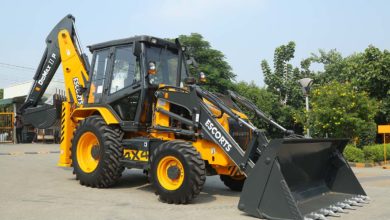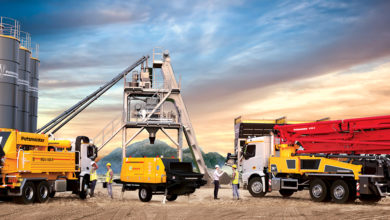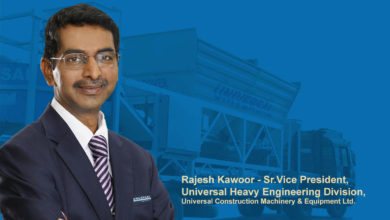SREI RS 111 TRILLION WAS DONE BY INCLUDING BASKETS OF PROJECTS THAT ARE UNDERWAY
Souren Mukhopadhyay, Deputy CEO, Srei Infrastructure Finance Limited

The Government is taking various initiatives to develop infrastructure in the country with a national infrastructure pipeline outlay of Rs.111 trillion during 2019-24. How do you view this?
A: In the backdrop of the large-scale disruption caused by the Covid-19 pandemic, the Government’s focus on infrastructure creation as the most preferred route to revive economic growth is highly appreciated. It will create substantial employment opportunities for the semi-skilled and unskilled labour force and open up myriad entrepreneurship opportunities both downstream and upstream, eventually crowding in private investments.
The fact that the Centre conducted a detailed evaluation to figure out the country’s infrastructure needs over the next five years shows how serious it is about pushing economic growth. The Government has devised the National Infrastructure Pipeline (NIP) with a clear division of shouldering responsibilities. For example, the Centre and States will implement 39% and 40% of the projects by value, respectively. The rest, 21%, would be undertaken by the private sector. Nevertheless, the private sector’s financial position in the infrastructure space and finances of State Governments must stabilise before they can embark on infrastructure projects.
How significantly will it impact the ambitious infrastructure project currently underway?
A: It is expected that NIP will positively impact projects currently underway, provided effective readiness models are implemented for all processes. The entire calculation of Rs 111 trillion was done by including baskets of projects that are underway. Energy, roads, railways and urban projects are estimated to account for the bulk of projects (around 70%). Within the investment pipeline, projects worth Rs 44 trillion (40%) are under implementation, projects worth Rs 33 trillion (30%) are at conceptual stages, projects worth Rs 22 trillion (20%) are under development, and projects worth Rs 11 trillion (10%) is uncategorised.
The initiative will also help align infrastructure requirements through seamless convergence between industries for urban nodes to become more sustainable in achieving development goals.
What have been your role and progress so far on this?
A: Srei is the market leader in India’s infrastructure equipment financing space, and naturally, we are very excited about NIP. Srei has been working on all major domains in the infrastructure sector, including advisory, consulting, asset, equipment financing and leasing. Our consulting division has been working proactively on diversifying our portfolio, and the concept of NIP along with the proposed dashboard shall help us devise strategy-based partnership models. We also engage with various stakeholders – primarily Government, across three domains (central/state/local) in developing end-to-end delivery-based partnership models while taking care of implementation and operational readiness of project components.
We look forward to a steady flow of orders over the next 4-5 years.
Tell us about the engineering expertise used for this project?
A: We apply engineering expertise primarily for mapping engineering and technical requirements. It is based on the equipment and specific skill sets required in developing, conceptualising, and implementing infrastructure project modules. We are also working on various technological innovative models based on dashboard management, online app-based models, and exclusive project management tools. All these ensure utmost streamlining of capacity, deployment schedules, resource availability and need-based equipment services.
The equipment industry and infrastructure projects enjoy a constructive bond. How can they grow together? The critical part is the selection of equipment in infrastructure projects at different stages. Tell us more about the same.
A: As a thumb rule, 20% of the cost is typically on account of equipment used in an infrastructure project. Thus, for a pipeline of projects worth Rs 111 trillion, the value of equipment required would be to the tune of around Rs 22 trillion. However, the infra sector uses high-value assets deployed for limited periods in any project, and it makes sense to procure equipment on lease or rent.
Therefore, contractors can use every piece of equipment for multiple projects. Assuming contractors use every piece of equipment for ten different projects, investments totalling Rs 111 trillion in value can be managed with equipment worth Rs 2.2 trillion. It works out to an annual infra equipment demand of Rs 440 billion, i.e. an infra equipment market size of USD 6 billion. It could attract several foreign equipment manufacturers in setting up production bases in India.
Extending the Production-Linked Incentive (PLI) scheme to the infrastructure equipment space will also attract foreign and domestic manufacturers for setting up shop in India. Not only will they produce to meet Indian demand, but they would also cater to demand from neighbouring countries.
Selection of equipment at various stages of a project life-cycle is critical to a project’s success. Many contractors and project developers require guidance on this front. This is where Srei’s three decades of experience comes in handy.
Along with guiding developers in selecting the right equipment, we provide valuable advice on managing assets through their entire life-cycle– right from acquisition to deployment, operation, and finally disposing of these assets. There is a large market for used equipment too, and Srei has played a critical role in creating this market.
The infrastructure industry is growing with many new projects in the pipeline? Should the Government initiate progressive initiatives for this sector to upscale its growth trajectory?
A: Infrastructure creation can take off in a big way once the private sector appetite for investment in infrastructure revives. For that, the Government needs to introduce several administrative changes to improve the ease of doing business. For example, many projects have faced problems in the recent past due to excessive delays in receiving necessary clearances and approvals. Therefore, both Central and State Governments should embrace a “deemed clearance” system within a particular period so that project executioners can commission projects within time.
Honouring arbitration awards must also be given the highest priority. Delays in settling payments have been a recurring problem in the infra project segment. Thankfully, after the pandemic, the Government has fast-tracked payment settlements, and all Government agencies must universally embrace this. The Government may also consider penalties for delays in payments to contractors. Progressive steps like these will go a long way in reviving the investment appetite for infra projects in the private sector.
Revival of private interest and influx of foreign investments in infra projects will revive demand for infra equipment. This demand comes mainly from small-time contractors, mostly MSMEs, to whom big developers outsource construction. Contractors in the MSME segment depend on Non-Banking Financial Companies (NBFCs) active in the infra equipment financing space. However, the pandemic and the resultant changes in regulatory guidelines have put NBFCs in a very tight spot. Disruption in cash flows has threatened their existence. While the Government has done its best to preserve the banking sector’s health, NBFCs also deserve to be protected, considering their sectoral expertise & vital role in the financial system.
The Government should quickly work out a relief package for such NBFCs. In the eventuality of a few of them going belly-up, the existence of thousands of MSMEs can get jeopardised. Such NBFCs should ideally have access to a refinancing agency. In addition, Tax Deducted at Source (TDS) should be exempted for NBFCs like it was done for banks. This TDS issue has prevented the co-lending model from taking off in a big way.
Considering the current development in infrastructure, what does the future hold for these sectors jointly?
A: Energy, water, housing, and transportation are the key sectors that will be critical in the days to come. Affordability in these sectors is essential if India wants to develop and achieve USD 5 trillion economy mark. Overall, as elaborated in the NIP, all these sectors offer semblance and ultimately should work on a partnership model, complementing each other in ushering overall development as envisaged.






